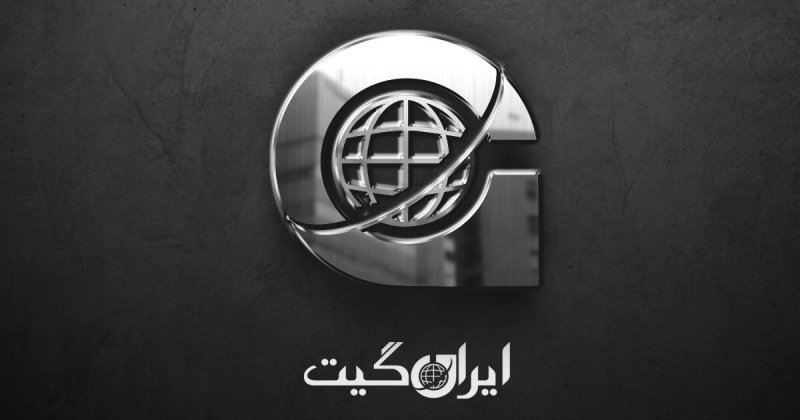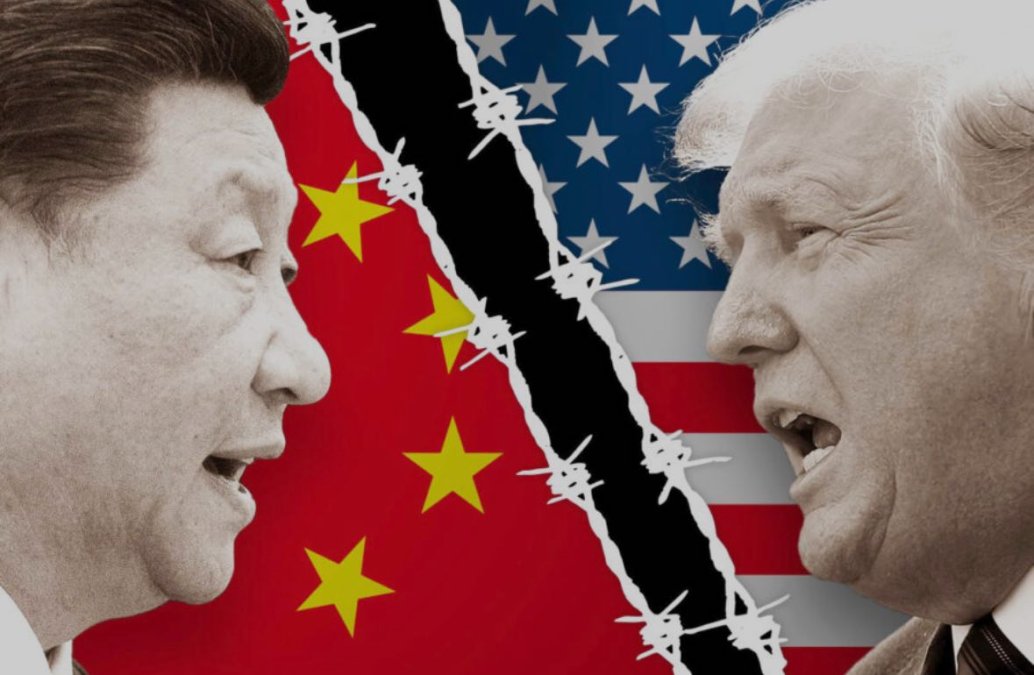The Battle of Orders: The Competition Between China and the US and the Decline of Multilateralism
The Battle of Orders: The Competition Between China and the US and the Decline of Multilateralism
In a world where geopolitical changes are occurring at an unprecedented pace and traditional boundaries of power analysis are being redefined, revisiting patterns of international order is no longer merely an academic concern but a necessity for better understanding the future that lies ahead for governments, nations, and global institutions.
In this journey, media and analytical institutions play an unparalleled role in explaining trends and clarifying the complexities of the international environment. Irangate News Agency, with an analytical approach and a multi-level view of global developments, strives to provide a platform for an informed understanding of global changes by offering deep, realistic, and independent content.
In this context, Saeed Aghanji, the editor of this agency, with his background in political journalism and analysis of international relations, provides an accurate, coherent, and reality-committed narrative of global order changes.
The following analytical note, penned by the editor at Irangate’s editorial team, offers a different perspective on the changing trends in the global order, one that seeks to strategically analyze the link between historical developments and today’s realities, away from common clichés.
From the traditional competition of great powers to the challenges of the liberal order in the 21st century, from Brexit to America First, and from the rise of China to the transition of the United States from leadership to competition, all are explained in this analysis not as separate events but as links in a chain.
Revisiting International Orders and US Foreign Policy Developments in Light of China-US Competition
Understanding the complexities of the international order requires a historical view of past power patterns and reflection on current trends.
The following note examines the two dominant patterns of global order in the modern era: first, the hierarchical order based on the competition of great powers that characterized the pre-World War II and Cold War eras, and second, the liberal multilateral order that emerged post-World War II centered around the United States.
This analysis, while reviewing the historical transition between these two orders, also addresses the gradual return of some old order features within the framework of the increasing competition between China and the US.
Furthermore, the role of major international players in this transformation, changes in US foreign policy, and the position of Britain following its exit from the European Union (Brexit) in this global outlook are examined.
Ultimately, the critical question arises: Is the US consciously seeking a return to great power competition, or has this change been inevitable?
Hierarchical Order and Great Power Competition: The Classical Realism Model
In the 19th century and early 20th century, international relations were defined by a hierarchical order and intense competition among great powers.
In this framework, realism theory, emphasizing the principle of survival, competition, and the primacy of national interests, formed the theoretical foundation of the dominant order.
The key features of this order included: 1. Concentration of power: Dominance of power in the hands of a few great powers like Britain, France, Germany, Russia, and later the United States led to the formation of an unequal and hierarchical structure in the international system. 2. Zero-sum competition: The success of one country was necessarily perceived as the failure of another, and this logic shaped the basis of international relations. 3. Balance of power: Preventing the absolute dominance of one power was pursued through the formation of variable military and diplomatic alliances, a policy that sometimes prevented war and sometimes preceded it. 4. Power-centric policy: Focus on the absolute sovereignty of national interests and extensive use of hard military power were other dimensions of this order. 5. Weakness of international institutions: The lack of common structures for resolving disputes led to repeated crises and ultimately the outbreak of world wars.
Liberal Order and Multilateralism: The Product of Experience and Lessons from War
With the end of World War II, the United States, as the victorious and undisputed power, took on the leadership of shaping a new order. This order, relying on the principles of political and economic liberalism, sought to prevent the recurrence of the catastrophes of world wars.
The key factors in this transition included: 1. Unprecedented war devastations: The scale of human and economic losses from the Second World War turned the necessity of establishing international rules to prevent such catastrophes into a mandate. 2. US hegemony: The economic, technological, and military superiority of the United States enabled the formation of institutions like the United Nations, the International Monetary Fund, and the World Trade System. 3. Ideological confrontation with the Soviet Union: Concerns over the spread of communism paved the way for the formation of stable coalition institutions like NATO.
The main features of this order included an emphasis on multilateral cooperation through international institutions, the promotion of democracy, human rights, and free trade, the use of soft and cultural power, and the formation of stable coalitions for collective security.
The Return of Old Order Elements in the Era of China-US Competition
Today, signs of a return to the hierarchical order are more apparent than ever. Structural competition between Washington and Beijing, changes in US foreign policy, and increasing distrust of international institutions are prominent indicators of this return. In this context, the transformation in US foreign policy has played a key role, a transformation that is assessed not merely as tactical or strategic but paradigmatic.
US Foreign Policy: From Liberal Leadership to a Return to Power Competition
One of the key questions in this area is why US foreign policy undergoes changes with the change of presidents.
The answer lies in the nature of the US political system. Although official institutions like the State Department and the Department of Defense are stable, the president, as the commander-in-chief, has significant authority in determining the direction of foreign policy.
In this regard, the rise of Donald Trump with the slogan America First is recognized as a turning point in this transformation.
The America First slogan was not a tactical change but a paradigmatic shift that challenged the fundamental principles of the liberal order.
The zero-sum approach, the narrow-minded prioritization of national interests, and the distrust of international institutions all acted in line with a return to the logic of great power competition.
The Domestic and International Roots of This Change
The change in US foreign policy was not merely a product of Trump’s personality but the result of a set of domestic and international trends: general fatigue with the costs of global leadership, dissatisfaction with the consequences of globalization, and social divides within the country; the rise of China as a geopolitical and economic rival; the diminishing credibility of international multilateral institutions.
These changes not only transformed the structure of the global order but also pushed the international environment towards competition, distrust, and bloc formation. The Role of Other Powers in This Transformation
The transformations in the global order are not limited to the US and China. Other powers also play a significant role. The European Union is striving for strategic independence and acting as a third pole. Russia is pursuing a redefinition of its influence from the perspective of hierarchical order and spheres of influence. Japan and India are strengthening military capabilities and actively participating in regional balance. Britain, following its exit from the European Union, seeks to redefine its global role within the framework of Global Britain policy.
Brexit and the Evolving Order: Britain and the Return to the Logic of Great Powers
Brexit can be seen as an effort by Britain to redefine its position in the international system. Exiting a multilateral framework indicates a tendency towards operational independence in an era where the global order is moving towards multipolarity and competitiveness.
The Global Britain document reflects London’s efforts to revive its independent global role beyond European frameworks. Britain, with strategic savvy, has adapted to new conditions and seeks to increase flexibility in the international environment.
Is the US Seeking a Return to Hierarchical Order?
In response to this question, two main perspectives are presented: 1. The voluntary approach: The US has concluded that the liberal order can no longer serve its interests and sees a return to power competition as a strategic choice. 2. The deterministic view
Contrary to the voluntary or choice-based perspective, some analysts believe that the return to hierarchical order is more an inevitable result of global geopolitical changes than a conscious choice by the US. In this view, factors such as the rise of China as a full-fledged structural rival in economic, military, technological, and even cultural domains; Russia’s aggressive behavior, including in the Ukraine crisis and intervention in European security order; the gradual decline in the legitimacy of international institutions like the World Trade Organization or the UN Security Council; the polarization of US domestic politics and public pressure to focus on tangible and more tangible economic interests
all have pushed the US in a direction where even if it desires to maintain the liberal order, it is, in practice, compelled to adopt policies closer to the logic of power competition and a return to hierarchical principles.
In other words, this perspective holds that the international structure has changed so dramatically that the US has also been forced to adapt to it.
Transition Towards a Hybrid Order and an Uncertain Future
What stands out in the present analysis is the transition from a liberal multilateral order to a hybrid order, one in which international institutions still exist, but competitive and hierarchical elements have increasingly gained strength.
This transformation is the result of a complex interaction between global geopolitical changes and domestic changes in the US.
In this context, the role of other powers in balancing or accelerating this process will be crucial. Britain, the European Union, Russia, China, and other emerging players are each trying to secure their position in the future order, an order that has yet to find a specific identity and is in the process of formation.

